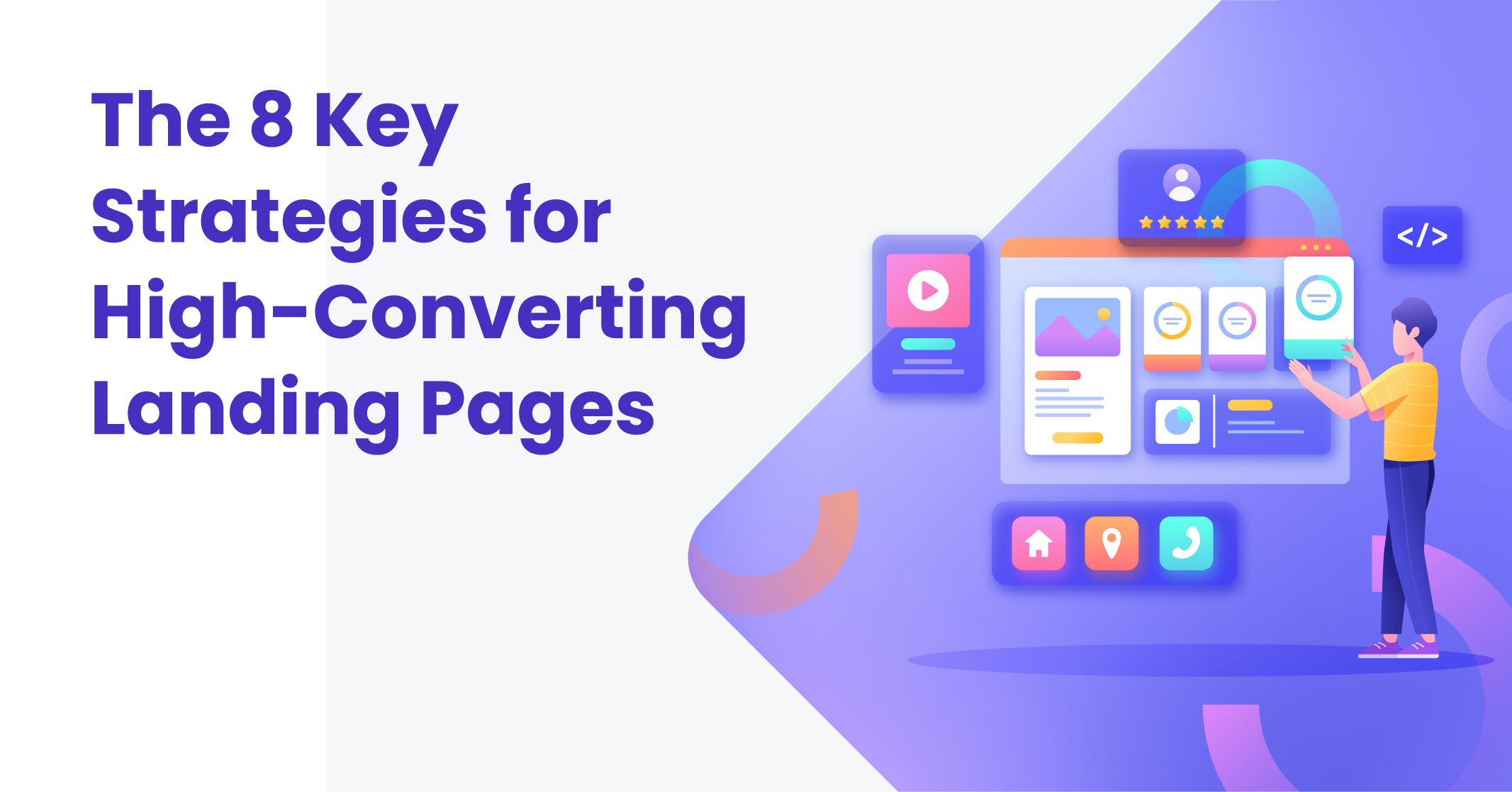I hope you enjoy reading this blog post.
If you want to get more traffic, Contact Us

Click Here - Free 30-Minute Strategy Session
Be quick! FREE spots are almost gone for this Month. Free Quote

A high-converting landing page is a digital asset specifically designed to persuade visitors to take a desired action, such as signing up for a newsletter, downloading a resource, or purchasing a product. These pages are purpose-built and distinct from general web pages, focusing on a single goal to eliminate distractions. By strategically incorporating design elements, compelling copy, and user-centred features, they enhance visitor engagement and conversion rates. Key components include a clear headline, concise messaging, visual cues, and a prominent call-to-action. Crafting a successful landing page also requires understanding user intent, testing functionality, and aligning its design with the target audience’s expectations.
The effectiveness of a landing page starts with a clear understanding of its purpose and intended audience. Each landing page should have a specific goal, such as capturing leads, promoting a product, or driving website engagement. Identifying the audience involves considering demographics, interests, and behaviours to tailor content and visuals accordingly.
Click Here – Free 30-Minute Strategy Session
Be quick! FREE spots are almost gone for this Month
Marketers should address their audience’s pain points and motivations, crafting messages that resonate and prompt action. Tone and language should align with the preferences of the targeted group. Building trust is essential, as users are more likely to engage when they feel understood and valued.
Headlines are the initial touchpoint that capture a visitor’s attention and set the stage for engagement. To create compelling headlines, it is essential to understand the audience’s needs and desires. Effective headlines are concise yet impactful, often addressing a problem or offering a solution.
Testing variations ensures optimisation for maximum click-through rates.
Effective copy is at the core of any successful landing page. It must resonate with the target audience and communicate the value proposition clearly. Using actionable language, such as verbs, encourages users to take steps towards conversion. Avoid jargon or overly complex phrases and maintain a user-friendly tone throughout the content.
Consistency is key, ensuring that headlines, subheadings, and calls-to-action align with the user’s intent and guide them towards action naturally.
Integrating visuals is a strategic approach to keep visitors engaged while conveying key messages effectively. Images, videos, and graphics help break up text-heavy content, making it more digestible. High-quality visuals should align with the brand’s style and tone, reinforcing consistency and trust.
Users process visuals faster than text, making their effective integration crucial for conversions.
Call-to-Actions (CTAs) are the pivotal elements that guide users toward desired actions. To optimise them effectively, marketers should focus on clarity and immediacy. CTAs should use action-oriented verbs, such as “Download,” “Sign Up,” or “Get Started,” to create a sense of urgency and direction.
Ensuring visual prominence is equally essential. Using contrasting colours, bold fonts, or button designs can make a CTA stand out. Positioning also matters; placing CTAs above the fold or near persuasive content increases visibility.
Testing variations is crucial. A/B testing different text, designs, and placements can help identify what drives clicks and conversions. By consistently refining CTAs, businesses can enhance engagement and maximise results.
Designing landing pages that are mobile responsive is essential, as a significant portion of web traffic originates from mobile devices. To achieve responsiveness, the layout must adapt seamlessly to varying screen sizes and orientations without sacrificing usability or readability. Accessibility, equally vital, ensures that the page is usable for individuals with disabilities. This includes providing alt text for images, ensuring sufficient colour contrast, and integrating keyboard navigation.
Key considerations include:
Social proof and trust signals play an essential role in persuading visitors to take action. Displaying testimonials, reviews, or user-generated content builds credibility by showcasing real experiences from others. Highlight reputable partnerships, certifications, or awards to demonstrate industry recognition. Trust badges for secure payments, data protection, and money-back guarantees reinforce confidence.
Including case studies or statistics provides quantifiable evidence of past success, further validating claims. Logos of well-known clients and media features emphasise authority. Incorporating social media follower counts serves to enhance trust. Placement of these elements throughout the landing page ensures they maximise impact without overwhelming the visitor’s experience.
A/B testing, also known as split testing, involves creating two or more variations of a landing page to identify which design, copy, or layout performs best. Marketers systematically test changes like headlines, call-to-action buttons, or imagery to understand user preferences. Variables should only be adjusted one at a time to ensure accurate results.
Effective analysis requires monitoring metrics such as click-through rates, bounce rates, and conversion rates. Tools like Google Analytics and dedicated platforms for A/B testing facilitate data collection and insights. Regular testing enables continuous optimisation, ensuring that the landing page evolves with user behaviour and industry trends.
Improving conversion rates requires leveraging sophisticated strategies rooted in data, design, and user psychology.
Combining these methods ensures continual improvement in user experience and goal attainment.
To transform strategies into tangible results, it is crucial to shift from planning to consistent execution. Applying the key principles outlined ensures landing pages resonate with target audiences while fulfilling business objectives.
Ensuring collaborative input between designers, marketers, and developers accelerates success. Execution should focus on fostering engagement, building trust, and delivering value. Each step provides an opportunity to refine, prioritise, and achieve measurable improvements.
LEAVE A REPLY